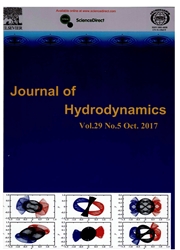

 中文摘要:
中文摘要:
与未组织的格子,有限的卷沿海的海洋模型(FVCOM ) 从它的原来的 FORTRAN 代码被变换成一 Compute 统一设备体系结构(CUDA ) C 代码,并且在图形的处理器单位(GPU ) 上优化了。建议 GPU-FVCOM 在矩形的盆对二个标准盒子的分析解决方案被测试,潮导致了流动,风导致了循环。模仿潮汐的运动并且分析流动地和垂直的潮速度结构然后被用于 Ningbos 沿海的水区域。模拟结果同意测量数据相当好。建议 3-D 模型的加速的性能到达 30 次在一台泰斯拉 k20 设备上实现的一个单个线程程序,和 GPU-FVCOM 的是比在有 20 个中央处理器核心的一个工作站上快的,它证明 GPU-FVCOM 为解决设计问题的大规模海区域和高分辨率是有效的。
 英文摘要:
英文摘要:
With the unstructured grid, the Finite Volume Coastal Ocean Model(FVCOM) is converted from its original FORTRAN code to a Compute Unified Device Architecture(CUDA) C code, and optimized on the Graphic Processor Unit(GPU). The proposed GPU-FVCOM is tested against analytical solutions for two standard cases in a rectangular basin, a tide induced flow and a wind induced circulation. It is then applied to the Ningbo's coastal water area to simulate the tidal motion and analyze the flow field and the vertical tide velocity structure. The simulation results agree with the measured data quite well. The accelerated performance of the proposed 3-D model reaches 30 times of that of a single thread program, and the GPU-FVCOM implemented on a Tesla k20 device is faster than on a workstation with 20 CPU cores, which shows that the GPU-FVCOM is efficient for solving large scale sea area and high resolution engineering problems.
 同期刊论文项目
同期刊论文项目
 同项目期刊论文
同项目期刊论文
 期刊信息
期刊信息
